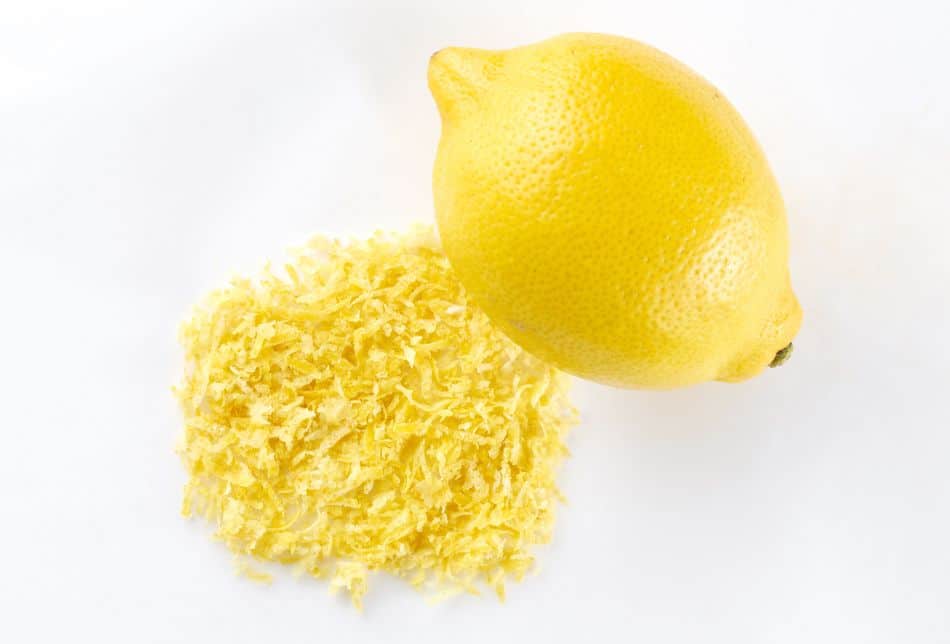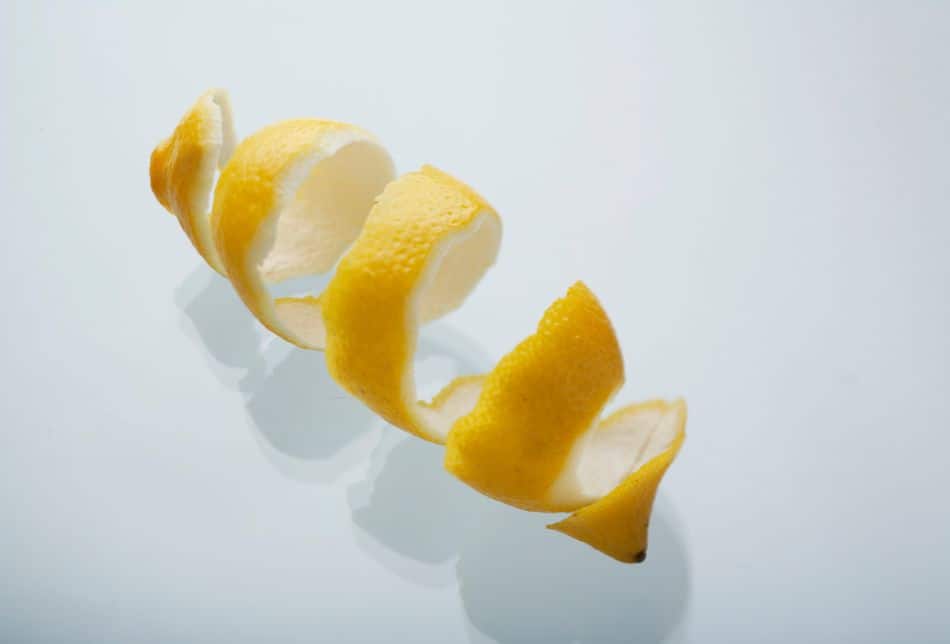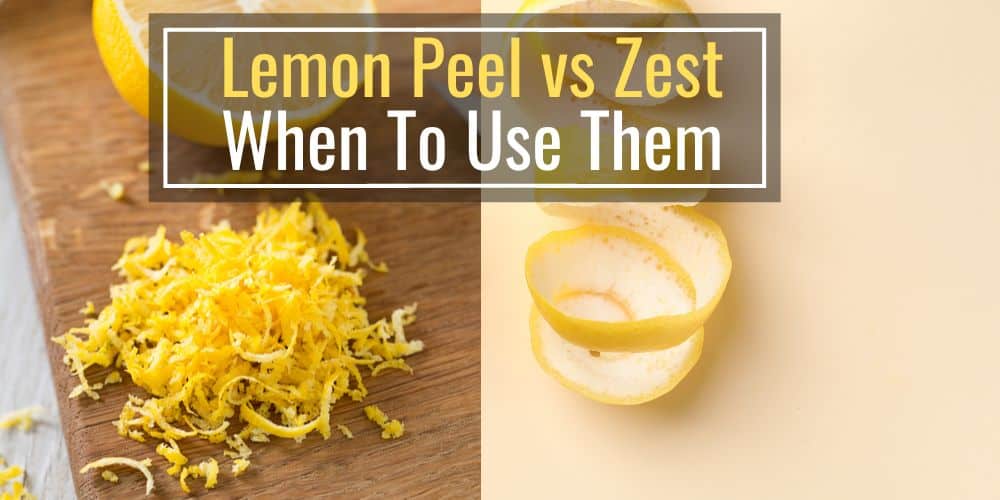If you’ve been looking to add some lemon flavor to your dishes, you may be wondering which between a lemon’s peel and lemon’s zest is a perfect choice.
Well, adding either of the two is an effective way to add such flavors and make your meals more palatable.
That’s in consideration that the fragrance and flavor that lemons have come from the oils in the fruit’s skin. The compound limonene is specifically responsible for the taste and smell of this citrus fruit.
As you can expect, however, there are some differences that set lemon zests and peels aside. These disparities make one better than the other, depending on your needs.
So, what are these differences, and which are the different uses?
Essentially, lemon zest is just the shavings or light grating of the lemon which will create a pleasant citrus flavor. The lemon peel includes the lemon zest but also the bitter outer rind of the lemon which will not be suitable for any recipe requiring just the lemon zest.
Now let’s take a more in-depth look at both lemon zest and peel so you know when to use each one.
Lemon Zest
When we talk about lemon zest, we’re referring to the outermost, colored part of the lemon rind. It’s relatively thin and has a strong, citrusy flavor. This part is full of essential oils, and it’s this oil that gives flavor to food.
The problem with using the entire lemon peel is that it can be quite bitter. That’s because the white pith found just under the skin is full of scathing chemicals.
The zest, on the other hand, is free of such chemicals.

Lemon zest is often used as a flavoring agent in various dishes, such as baked goods, salad dressings, and marinades. It can also be used to make cocktails, such as the popular lemon drop martini.
When zesting a lemon, only use a Microplane or grater.
These devices will allow you to remove the zest without getting any of the pith. The zest can then be used whole or finely chopped, depending on your needs.
Lemon Peel
Lemon peel, on the other hand, is the entire outer rind of the citrus fruit, zest included. It’s relatively thick and has a bitter taste because of the pith. Just like the zest, it’s also full of essential oils.

The problem with using lemon peel is that it can make your dishes quite bitter. That’s why it’s not often used as-is.
Instead, lemon peel is often candied or used as a garnish.
Candied lemon peel is often used to top cakes and cupcakes. It can also be added to various baked goods, such as muffins and biscuits.
The process of candying lemon peel involves boiling it in sugar water until it’s soft and then coating it in sugar. This gives the peel a sweet taste that offsets its bitterness.
Lemon peel can also be used as a garnish.
A popular way to do this is by using a lemon twist. To make one, simply cut a strip of lemon peel (with pith) and twist it.
You can then use it to garnish cocktails, such as the gin martini.
How do lemon peel and lemon zest differ in terms of flavor?
The main difference between lemon zest and lemon peel is that the zest is much more flavorful than the peel. This is because the zest simply adds pure lemon flavor to your dishes.
Lemon peels, on the other hand, will add an unpleasant note to the lemon flavor as a result of the bitterness of the pith.
When zesting lemons, it’s best that you be gentle to avoid getting any of the pith. That’s why it’s always a good idea to use a Microplane or grater. These devices will help you avoid the pith and only get the zest.
When trying to get the peel, on the contrary, you can use a vegetable peeler or a knife.
How do lemon peel and lemon zest differ in terms of texture?
The zest is much thinner than the peel and as a result, it has a more delicate texture.
The lemon peel’s thick pith can make it quite tough and difficult to chew. In addition, the zest is also much more fragrant than the peel.
If your recipe requires one, can you substitute it with the other?
When it comes to using lemon zest, it’s best that you avoid using fresh lemon peel as a replacement. That’s basically because of the bitterness.
You can, however, use dried lemon peels in the place of fresh zest. All you have to do is to ensure that you chop the peels as finely as you can, after which you can go ahead to use them just like you would with lemon zest.
For lemon peels, you can use lemon zest in all applications that require the use of lemon peel for flavoring only.
Keep in mind, however, that lemon zest does not make a good substitute in cases where you need to use candied lemon peels.
That’s in consideration that such applications will often necessitate the use of peels for texture as well, not just flavoring.
So, which is better?
Well, it all depends on your needs. If you want to add a strong lemon flavor to your dishes while making sure that the lemon is not obtrusive in any way, then lemon zest is the way to go.
In simple words, lemon zest makes a good choice for when your want the little pieces of your lemons to disappear into your dish.
Lemon zest is also a perfect choice for dishes that won’t be cooked or will stay uncooked for an extended period, such as a salad or lemon chiffon pie.
However, if you’re looking for something that will give your dish a bit of texture or something that you can chew on, then the lemon peel is the way to go.
In addition, you can use lemon peels for dishes that take a long time to cook. That’s in consideration that lemon peels can release the lemon flavor for a longer period compared to zests.
Stews, compotes, and marmalades are good examples of dishes that would do great with lemon peels.
Final Thoughts
Lemon zest and lemon peel both have their own unique purposes.
It all boils down to what you want to use them for.
Just remember that lemon zest is much more flavorful than the peel and that the zest is also much more fragrant compared to the peel. Lemon peels are a good choice when you need something with a bit of texture or something that you can chew on.

